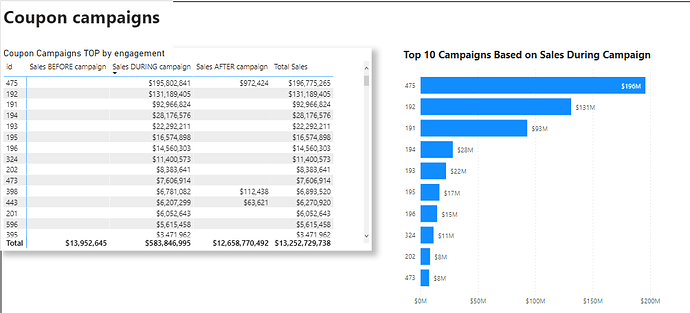@Arturs ,
See how this works for you:
In order to get this to work, before addressing the DAX measures I needed to fix a few things with data model:
- Calendar table was not marked as a date table, which is important for time intelligence analyses like this one
- Your two date fields in the Campaign table were not set as type date, but instead type text, again which would not allow for the necessary time intelligence calculations. I reset these two to type date.
- I’m not sure what your slicer is supposed to be doing – it is using a field from a hidden disconnected table, so given that it is not part of the data model, nor incorporated into the DAX it is not doing anything currently and I wasn’t sure what intent was, so I left it unchanged.
Once the above changes were made, the DAX measures were pretty straightforward – just using CALCULATE to change the context on the Total Sales measure to: before the initiation date of the selected campaign, during the campaign itself, and after the close date of the campaign.
Here’s the “before” measure for example:
Sales BEFORE campaign =
CALCULATE(
[Total Sales],
FILTER(
Orders,
Orders[order_date] < RELATED( 'Coupon campaigns'[created_at] )
)
)
If you haven’t already, I would strongly recommend going through the Ultimate Beginner’s Guide to DAX Course. @sam.mckay does an outstanding job explaining the concepts used to create the measures in this solution.
I hope this is helpful. Full solution file attached below.
– Brian
EDNA Forum - Coupon campaigns report - Solution.pbix (2.6 MB)
